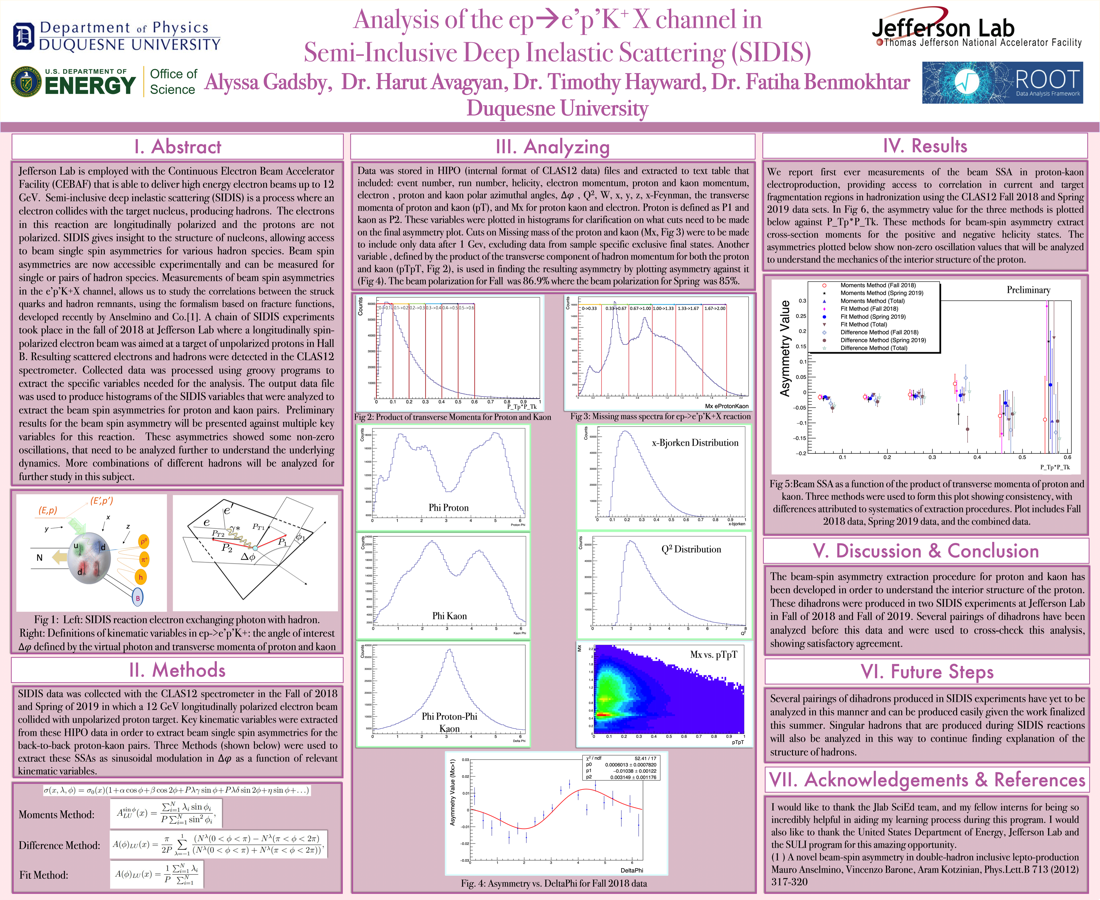Undergraduate Research at Jefferson Lab
Analysis of the ep → e'p'K + X Channel in Semi-Inclusive Deep Inelastic Scattering (SIDIS)
Student: Alyssa Gadsby
School: Duquesne University
Mentored By: Dr. Harut Avagyan
Jefferson Lab is employed with the Continuous Electron Beam Accelerator Facility (CEBAF) that is able to deliver high energy electron beams up to 12 GeV. Semi-inclusive deep inelastic scattering (SIDIS) is a process where an electron collides with the target nucleus, producing hadrons. The electrons in this reaction are longitudinally polarized and the protons are not polarized. SIDIS gives insight to the structure of nucleons, allowing access to beam single spin asymmetries for various hadron species. Beam spin asymmetries are now accessible experimentally and can be measured for single or pairs of hadron species. Beam spin asymmetry, as well as other kinematic variables from the e'pK+X channel, allows us to observe the distribution of quarks inside hadrons. A chain of SIDIS experiments took place in the fall of 2018 at Jefferson Lab where a longitudinally spin-polarized electron beam was aimed at a target of unpolarized protons in Hall B. Resulting scattered electrons and hadrons were detected in the CLAS12 spectrometer. Collected data was processed using groovy programs to extract the specific variables needed for the analysis. The output data file was used to produce histograms of the SIDIS variables that were analyzed to extract the beam spin asymmetries for proton and kaon pairs. Preliminary results for the beam spin asymmetry will be presented against multiple key variables for this reaction. These asymmetries showed some non-zero oscillations, that need to be analyzed further to understand the mechanism inside the proton. More combinations of different hadrons will be analyzed for further study in this subject.
[Watch the presentation on YouTube]

Citation and linking information
For questions about this page, please contact Education Web Administrator.
